Walking with a painful knee is bad enough but walking up or down a stair with a painful knee requires some level of control.
In this blog, we are going to dive into the mechanics of going up and down stairs but first we will have to go through what knee pain is and the common causes.
What is knee pain?
Knee pain is pain in or around the knee that may indicate a condition affecting the knee joint itself or the soft tissue around the knee. The location and severity of knee pain differ according to the of the knee pain. Some symptoms include:
- Swelling and stiffness
- Redness and warmth to the touch
- Weakness or instability
- Popping or crunching noises
- Inability to fully straighten the knee
Some causes of knee pain are:
- osteoarthritis: pain, inflammation, and joint destruction caused by degeneration and deterioration of the joint
- tendinitis: pain in the front of the knee that is made worse when climbing, taking stairs, or walking up an incline
- bursitis: inflammation caused by repeated overuse or injury of the knee
- chondromalacia patella: damaged cartilage under the kneecap
- rheumatoid arthritis (RA): a chronic autoimmune inflammatory disorder that causes painful swelling and can eventually cause joint deformity and bone erosion
- dislocation: dislocation of the kneecap most often the result of trauma
- meniscus tear: a rupture in one or more of the cartilage in the knee
- torn ligament: tear in one of the four ligaments in the knee — the most commonly injured ligament is the anterior cruciate ligament (ACL)
Factors that may make chronic knee pain worse:
- injuries to the structure of the knee can cause bleeding and swelling and can create a chronic problem over time if not treated properly
- sprains and strains
- overuse
- infection
- bad posture and form when doing physical activity
- not warming up or cooling down before or after physical activity
- improperly stretching the muscles
At this point, it is important to note that obese people, older people and athletes are at the most risk of chronic knee pain.
Walking up and down the stairs.
To avoid falling while ascending or descending stairs after an injury, it is important to learn the correct techniques for negotiating steps. Using stairs while suffering from knee pain can be especially scary, since the last thing you want to do is reinjure yourself and cause more problems
Fortunately, with some training and a little practice, you can learn to negotiate stairs safely and with absolute confidence.
Leading With the “Right” Foot
The saying “put the right forward” takes on an entirely different meaning when you have knee pain. Despite what some may think, there is a “right” and “wrong” foot, and the one you lead with changes depending on the direction you are moving.
To help people remember which foot to lead with when ascending or descending stairs, it is important to use the phrase “up with the good, down with the bad.” What this means is that you should lead with your stronger leg to walk up the stairs and your weaker leg to walk down.

When ascending stairs, remember that a strong leg is needed to propel you upwards; the other leg just follows. When descending stairs, you need a good leg to bear your body weight as you lower your injured one. Until this becomes automatic, repeat the words “up with the good, down with the bad” before navigating steps, curbs, or any steep incline or decline.
Using Assistive Devices
Having a handrail makes navigating the stairs all the easier. If you don’t have one and can’t afford to install one, you may need an assistive device like a cane or crutch to provide you greater balance.
To use a cane or crutch correctly when ascending or descending stairs:
- Hold onto the railing with one hand and place the cane or crutch on the opposite side of your injured leg.
- Lift your stronger leg onto the step when going up and start with the injured leg when going down.
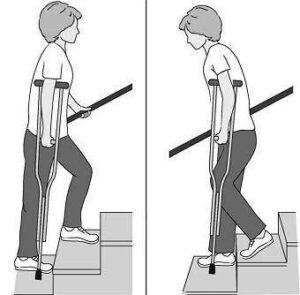
If you are using a walker, you can still negotiate stairs as long as you have a handrail.
To do so:
- Turn the walker sideways with the crossbar next to you.
- Place the two front legs of the walker on the first step.
- Hold the walker with one hand and the handrail with the other.
- Supporting your weight evenly between the handrail and walker, step up with your good leg.
If descending the stairs, follow the same instructions, but step down with the injured leg.
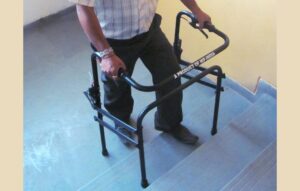
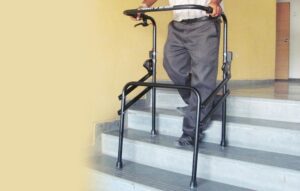
Safety Tips
One of the primary concerns is the avoidance of slips and falls.
If the stairs are polished or slick, you can purchase temporary adhesive floor treads to provide more traction or wear gripper socks with rubber treads. Gripper socks can even help if you have a synthetic runner as the carpet fibers can sometimes be slick.
References:

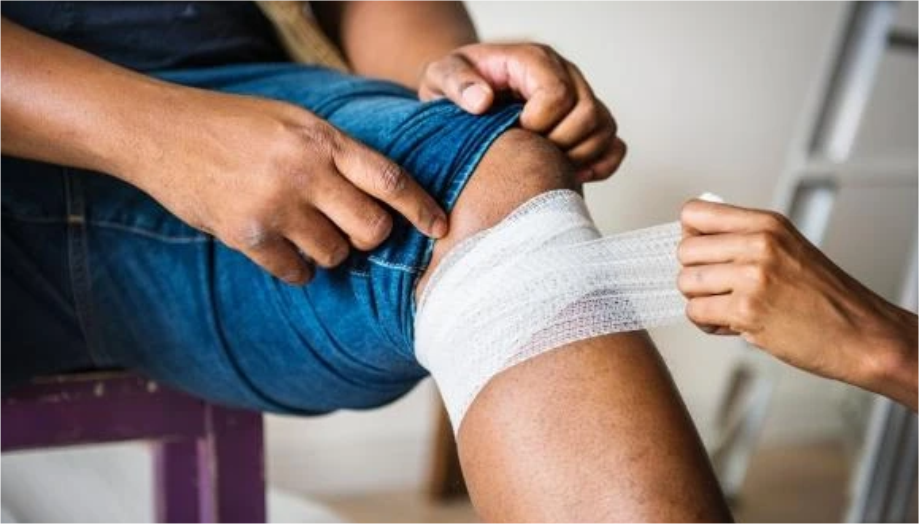

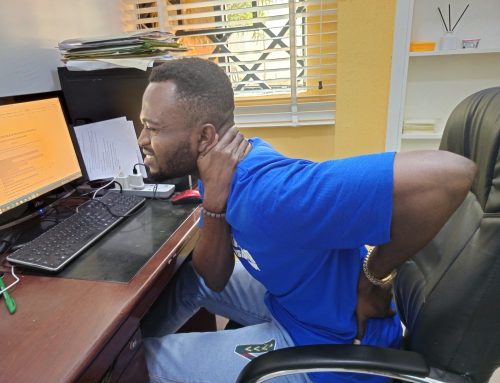
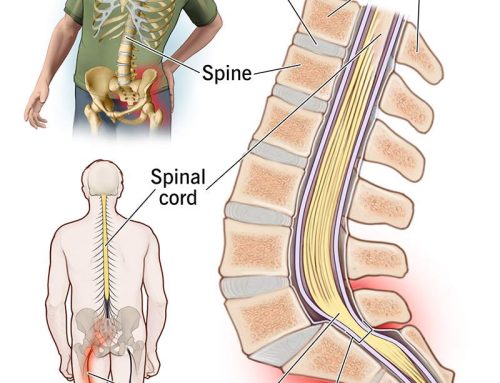
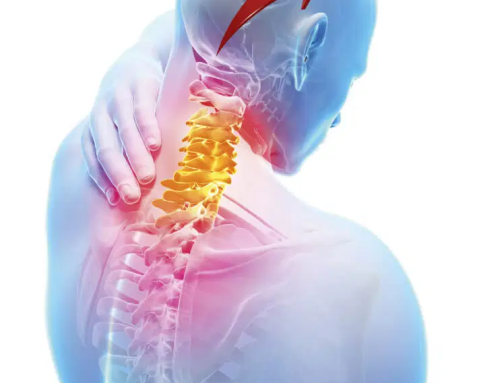
Leave A Comment